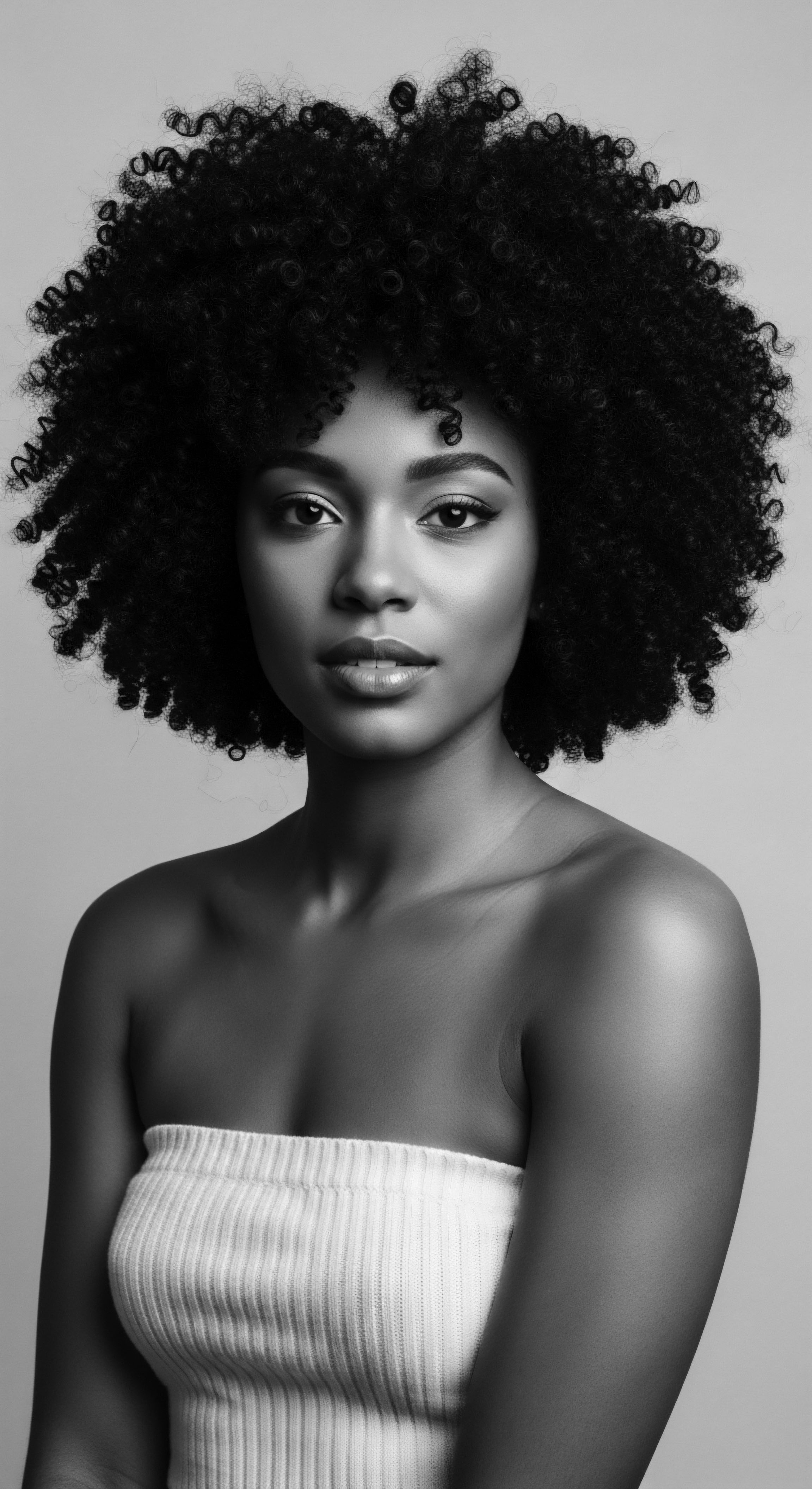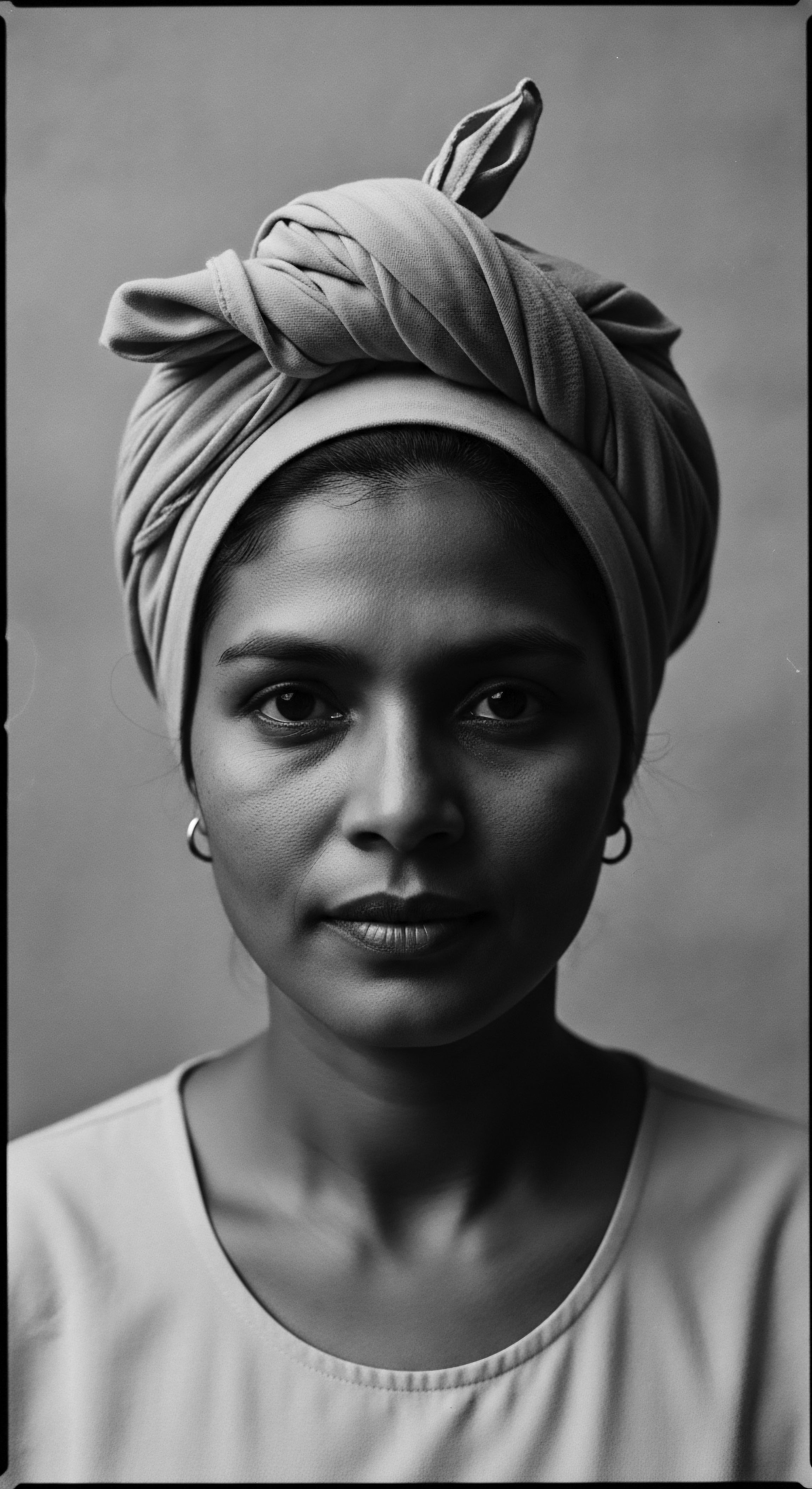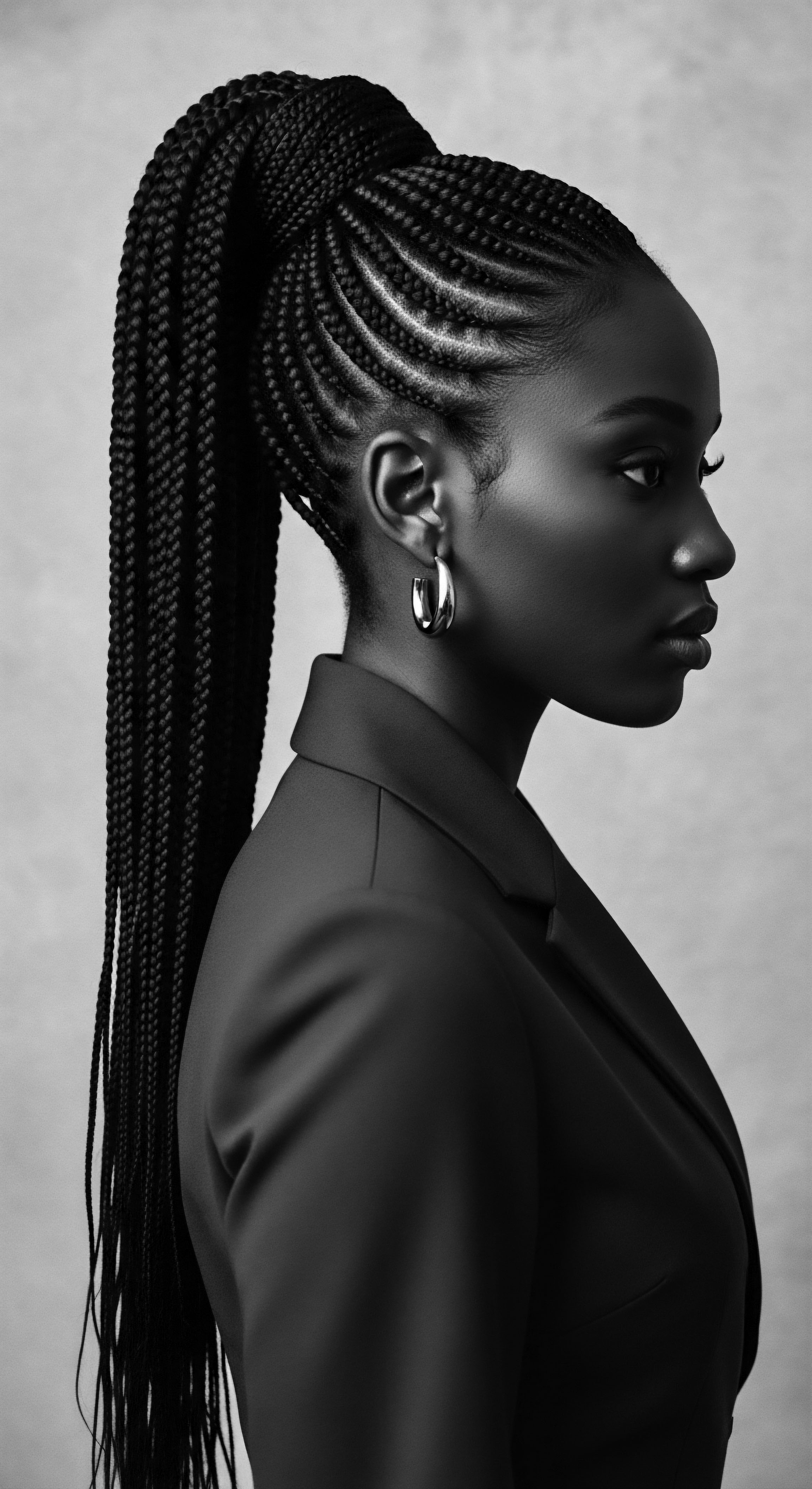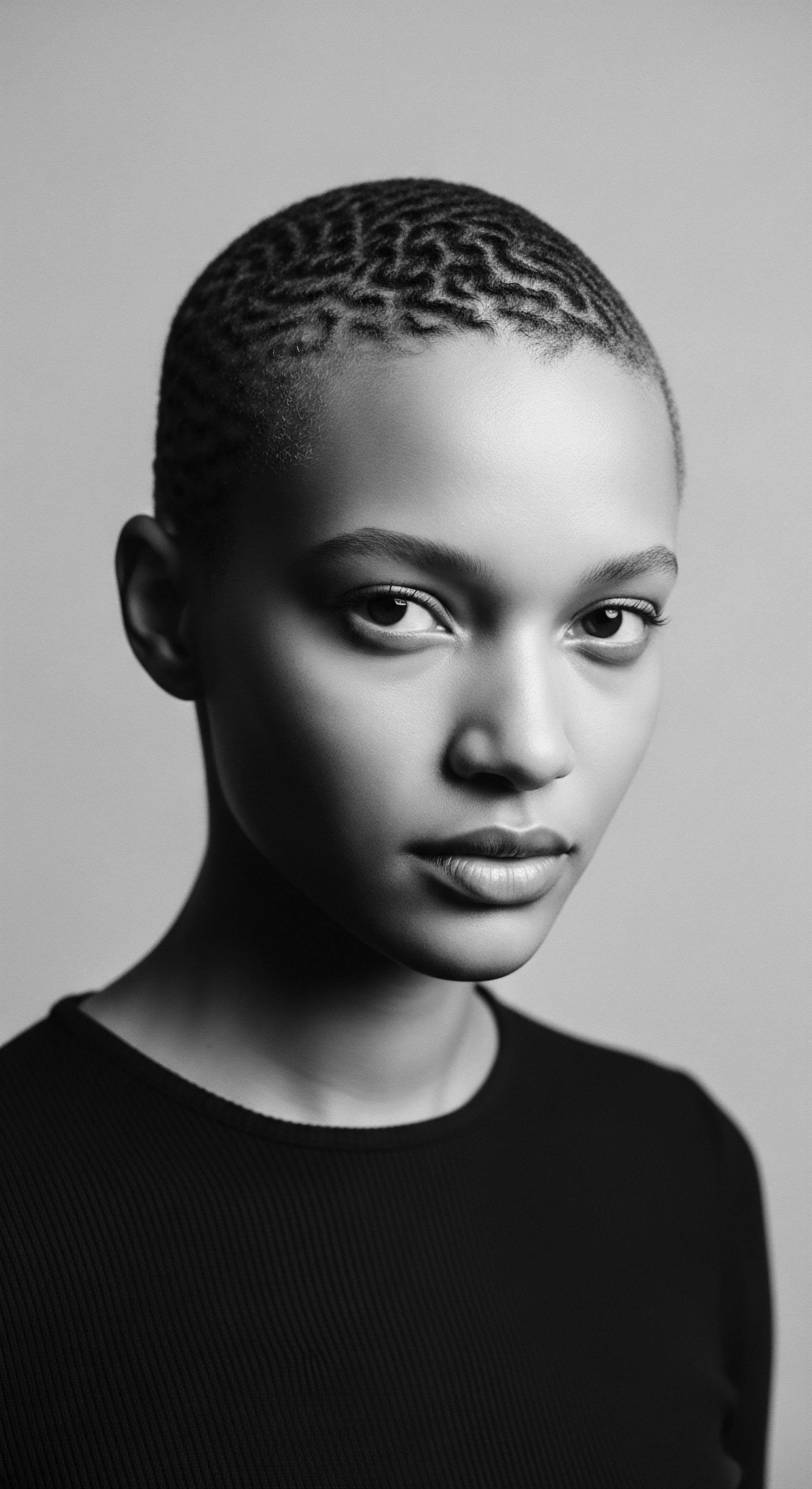
Fundamentals
From the very genesis of human civilization, the tending of hair, skin, and nails has held a profound significance, intertwining with communal rituals, personal expression, and collective identity. Across diverse ancestral landscapes, practices of beautification were never mere superficial acts; they were woven into the very fabric of existence, communicating status, lineage, and spiritual connection. The contemporary concept of Cosmetology Regulation emerges from these ancient wellsprings of care, translating age-old communal understandings of hygiene and aesthetic artistry into formalized frameworks.
At its fundamental interpretation, Cosmetology Regulation signifies the structured oversight governing the professional practice of hair, skin, and nail care. This includes a wide array of services offered to individuals, encompassing acts such as cutting, styling, cleansing, tinting, or treating hair; applying cosmetic preparations to the scalp, face, or body; and performing manicures or pedicures. It extends its reach to the establishments where these practices occur, like salons and schools, ensuring certain standards prevail. The aim of this formal arrangement centers on public health, safety, and consumer protection.
It ensures that those who offer these services possess the necessary skills and knowledge to perform them without harm, and that environments where beauty care unfolds maintain sanitary conditions. This foundational understanding helps delineate the scope of official guidelines, which license individuals and businesses, develop study curricula, and enforce standards for practice.
The core of cosmetology regulation revolves around the licensing process. This typically involves several steps for aspiring professionals:
- Educational Requirements ❉ Aspiring cosmetologists must complete a prescribed number of hours in an approved beauty school, covering a curriculum that traditionally includes anatomy, physiology, chemistry, sanitation, and practical techniques across various services.
- Examination ❉ After completing their training, individuals must pass both written and practical examinations administered by state boards to demonstrate their competency.
- Licensure and Renewal ❉ Successful candidates receive a license, which must be renewed periodically, often requiring continuing education to keep skills current and ensure compliance with evolving safety protocols.
Cosmetology Regulation, at its heart, is a formal embrace of ancient care principles, systematizing health and skill in the professional realm of beauty.
Beyond individual licensing, the regulatory framework also dictates rules for salon operations. These stipulations cover everything from the sanitization of tools and equipment to the proper disposal of waste, aiming to prevent the spread of infections. These guidelines also govern aspects like ventilation, water quality, and general cleanliness within the professional space. The intention behind these rules is to safeguard both the professional and the client, fostering an environment where well-being is paramount.
For communities with a deep tradition of communal grooming, these regulations echo ancestral calls for collective responsibility and care for one another, though often through different means. The essence of the regulatory impulse is to ensure that spaces of beautification remain sanctuaries of health and artistry.

Intermediate
Moving beyond the basic delineation, the intermediate meaning of Cosmetology Regulation reveals a more complex landscape, one where historical currents, cultural practices, and scientific understandings converge and sometimes diverge. The historical trajectory of formal beauty regulation, particularly in Western societies, is more modern than one might assume, evolving significantly in the early to mid-20th century, often driven by public health concerns and the professionalization of the beauty industry. However, this formalization did not always account for the breadth of human hair diversity, especially textured hair types.
The evolution of these guidelines, as a statement of intent, reflects a society grappling with how to standardize a profession deeply rooted in ancient, often informal, practices. Early forms of regulation focused heavily on sanitation and basic hair and skin treatments, drawing from emerging scientific understanding of hygiene. For instance, the passage of the Federal Food, Drug, and Cosmetic Act of 1938 in the United States established foundational safety standards for cosmetic products, influencing what tools and preparations were deemed permissible in salons. This act, while broad in its scope, often overlooked the particular needs and historical methods of care for textured hair, creating an unspoken division in the beauty landscape.

The Unacknowledged Divide in Care
For generations, ancestral practices of textured hair care thrived within communities, passed down through oral traditions and communal gatherings. These practices, such as intricate braiding, specific oiling rituals, and natural cleansing methods, predated formal cosmetology boards by centuries. They flourished outside the burgeoning formal beauty industry, often because that industry was not designed to serve or even acknowledge the unique characteristics of Black and mixed-race hair. Early regulatory definitions of cosmetology, frequently centered on European hair types, inadvertently rendered traditional textured hair artistry as ‘unregulated’ or ‘informal,’ setting the stage for future challenges.
Consider the distinctions often drawn in regulatory language itself. Many definitions of cosmetology, such as those found in Indiana or Delaware statutes, enumerate services like “cutting, trimming, styling, arranging, dressing, curling, waving, permanent waving, cleansing, bleaching, tinting, coloring, or similarly treating hair”. While these phrases might seem universal, their practical application in training and licensing often implicitly assumed straight or easily manipulated hair. This subtle but significant omission meant that the complex techniques required for various curl patterns, densities, and textures were either absent from official curricula or relegated to specialized, often marginalized, programs.
Intermediate insight into Cosmetology Regulation uncovers its historical leanings toward Eurocentric hair types, sidelining ancestral care traditions for textured hair.
This historical oversight meant that a vast repository of hair knowledge—practices honed over centuries for kinky, coily, and wavy hair—remained largely outside the regulated domain. This is not to say that these ancestral practices lacked rigor or effectiveness; rather, they simply did not fit neatly into a regulatory framework that was, for decades, predominantly shaped by a different cultural and biological understanding of hair. The meaning of Cosmetology Regulation, when viewed through this heritage lens, becomes a story of both inclusion and exclusion, of what was deemed legitimate and what was implicitly left to thrive in the community’s own care systems.

Academic
At an academic stratum, the concept of Cosmetology Regulation transcends a mere set of rules; it represents a profound socio-legal construct, a cultural artifact that both reflects and reinforces societal norms, particularly concerning aesthetics, public health, and racial hierarchies. Its meaning, from this elevated vantage point, is deeply intertwined with power dynamics, economic control, and the historical marginalization of specific communities. The regulatory apparatus, while ostensibly neutral in its pursuit of public welfare, has historically exhibited a pronounced bias, inadvertently shaping the contours of beauty standards and access to professional opportunities.
To delve into this complexity, we must scrutinize the very mechanisms through which cosmetology has been systematized. These mechanisms include licensing requirements, curriculum development in beauty schools, and the scope of practice definitions. Each of these elements, when subjected to critical analysis, reveals historical patterns of exclusion that have disproportionately affected individuals with textured hair, particularly those from Black and mixed-race ancestries.
The foundational assumption embedded within much of early cosmetology education was a Eurocentric ideal of hair, which often manifested as straight or loosely wavy strands. This narrow focus propagated a systemic knowledge gap, leaving countless professionals ill-equipped to work with the diverse range of human hair textures.

The Curricular Silence ❉ A Legacy of Exclusion
A powerful instance illuminating the Cosmetology Regulation’s historical connection to textured hair heritage and Black/mixed hair experiences lies in the pervasive absence of comprehensive textured hair education within mainstream cosmetology curricula for generations. Historically, cosmetology schools predominantly centered their teaching on the mastery of fine, straight hair, preparing students for state licensing exams that mirrored this limited scope. This curricular silence forced individuals seeking specialized care for kinky, coily, or tightly curled hair to navigate a landscape where properly trained professionals were scarce.
This lack of inclusive training was not accidental; it was a direct consequence of the historical segregation within the beauty industry. As scholar Julia Kirk Blackwelder details in Styling Jim Crow ❉ African American Beauty Training during Segregation, racial prejudice and discrimination profoundly shaped state beauty codes and licensing practices. During the Jim Crow era, while formal cosmetology regulation grew, the emergent Black beauty industry developed largely independently, providing essential services and economic pathways for African Americans who were largely excluded from mainstream establishments. This separate sphere included the establishment of Black beauty schools, often founded by pioneers like Madam C.J.
Walker, whose Lelia College provided formal training in hair care tailored to Black women’s needs. This dual system highlighted the regulatory framework’s failure to encompass all hair types, effectively creating a parallel universe of beauty practice.
Academic scrutiny reveals Cosmetology Regulation as a socio-legal framework, historically reinforcing biases and shaping beauty norms through its very structure.
The ramifications of this historical oversight are profound and enduring. Even in contemporary times, despite recent legislative efforts in states like New York to mandate textured hair education in cosmetology schools, the legacy persists. A 2020 report by TRESemmé indicated that 86% of Black Women Reported Experiencing Challenges Finding Consistent, Quality Hair Care at Salons. (TRESemmé, 2020) This statistic powerfully delineates the functional consequence of historical regulatory neglect and the deeply rooted bias that has long plagued the industry.
It points to a regulatory framework that, for decades, implicitly denied the cultural and biological reality of textured hair, leaving generations of clients underserved and countless stylists unprepared. The economic burden on Black clients often includes higher costs for services, reflecting the perceived ‘specialized’ nature of textured hair care, a direct outgrowth of its historical exclusion from general training.

The Struggle for Recognition ❉ Braiding and Ancestral Craft
Another critical lens through which to examine Cosmetology Regulation is its interaction with traditional hair braiding. Braiding, an ancient art form with profound cultural significance across African and diasporic communities, was often not covered or was explicitly excluded from mainstream cosmetology curricula. Instead, early 20th-century regulations, designed to ensure public health and safety through standardized chemical practices, inadvertently imposed burdensome and irrelevant requirements on braiders who used no chemicals and whose skills were passed down through generations. For example, in many states, braiders were required to complete hundreds, sometimes thousands, of hours of cosmetology training and pay significant tuition fees, learning techniques like chemical perms and coloring that bore no relation to their craft.
This regulatory incongruity led to prolonged legal and political battles, with advocates arguing for deregulation or for separate, more appropriate licensing categories for natural hair care. The Institute for Justice, a public interest law firm, has been instrumental in challenging these laws, leading to deregulation in numerous states. The core argument centered on the idea that hair braiding, an ancestral practice, relied on different principles of care and presented distinct public health considerations compared to chemical-laden cosmetology services. This fight for “braiding freedom” represents a crucial chapter in understanding how formal regulation clashed with cultural heritage, ultimately forcing a re-evaluation of what constitutes ‘professional’ hair care and who dictates its boundaries.
| Aspect of Regulation Curriculum Focus |
| Impact on Textured Hair Heritage (Historical Context) Mainstream cosmetology schools historically centered training on straight hair, marginalizing techniques for diverse curl patterns. This created a knowledge gap that left many stylists unprepared for Black and mixed-race clients. |
| Aspect of Regulation Licensing Requirements |
| Impact on Textured Hair Heritage (Historical Context) Requirements often demanded extensive hours of training in chemical services irrelevant to traditional practices like braiding, posing undue financial and practical burdens on natural hair artists. |
| Aspect of Regulation Economic Opportunities |
| Impact on Textured Hair Heritage (Historical Context) Segregated beauty industries arose, where Black cosmetologists, though licensed within their communities, faced systemic barriers to broader market access. |
| Aspect of Regulation Public Perception |
| Impact on Textured Hair Heritage (Historical Context) The regulatory framework subtly reinforced Eurocentric beauty standards, implying that only practices conforming to these norms were 'professional' or 'safe,' overlooking the deep-seated wisdom of ancestral care. |
| Aspect of Regulation The historical regulatory landscape inadvertently enshrined a narrow definition of beauty, creating a profound chasm between formal cosmetology and the rich traditions of textured hair care. |
The academic meaning of Cosmetology Regulation, therefore, encompasses its role as a gatekeeper. It has not only determined who could practice hair care but also what forms of hair care were deemed legitimate within a public, professional sphere. This system inadvertently fostered the resilience and self-sufficiency of Black beauty cultures, as communities developed their own schools, products, and networks to serve their distinct needs. The challenges to these regulations, such as the push for braiding deregulation or mandatory textured hair education, reflect ongoing efforts to dismantle historical inequities and allow the breadth of human hair heritage to find its rightful place within the professional sphere, ensuring the definition of professional care truly embraces all strands of our shared human experience.

Reflection on the Heritage of Cosmetology Regulation
The journey through the definition of Cosmetology Regulation, particularly through the prism of textured hair heritage, reveals a narrative far richer and more resonant than mere legalistic decree. From the elemental biology echoing in ancient practices, through the tender thread of community care, to the unbound helix of identity and future aspirations, these regulations hold a mirrored reflection of our evolving understanding of beauty, wellness, and self. The very concept of regulation, at its core, is an ancient one ❉ how do we ensure communal well-being when specialized skills are exchanged? Ancestral wisdom provided answers through apprenticeship, observation, and direct lineage of knowledge, ensuring a harmonious balance between individual artistry and collective safety.
The current formal structures, often born from moments of public health concern or industry professionalization, inadvertently constructed boundaries that once marginalized the deep heritage of Black and mixed-race hair practices. Yet, the resilience of these ancestral traditions, passed down through generations, refused to be confined. Black beauty pioneers, visionaries like Madam C.J.
Walker, did not merely establish businesses; they forged alternative regulatory pathways, creating schools and systems that honored and affirmed textured hair, nurturing a vibrant economic and cultural ecosystem. This parallel evolution testifies to the enduring power of heritage to shape its own destiny, even when faced with institutional oversight.
Consider the rhythm of a skilled braider’s hands, a practice honed over centuries, each movement a testament to ancestral knowledge. The early attempts to force such a craft into a mold designed for chemical processing represents a profound misunderstanding of its nature and its meaning to cultural identity. The ongoing movements advocating for inclusive cosmetology education and the deregulation of traditional practices are more than legislative battles; they are profound acts of cultural reclamation. They speak to a collective yearning for a regulatory framework that genuinely sees, values, and protects all forms of hair artistry, rather than inadvertently erasing them.
The future of Cosmetology Regulation, viewed through Roothea’s lens, calls for a conscious re-membering, a weaving of scientific understanding with ancestral reverence. It is a call to recognize that true professionalism in hair care cannot exclude the diversity of human hair, nor the deep cultural significance it carries. It is an opportunity to ensure that every strand, every curl, every coil is understood not as a deviation from a norm, but as a unique expression of heritage, deserving of expert, culturally attuned, and respectful care. This forward gaze, rooted in profound historical understanding, illuminates a path where regulation becomes a liberating force, empowering individuals and communities through their hair, allowing each helix to truly unbind and flourish in its authentic glory.

References
- Blackwelder, Julia Kirk. 2003. Styling Jim Crow ❉ African American Beauty Training during Segregation. Texas A&M University Press.
- Boyd, Marie. 2018. Gender, Race & the Inadequate Regulation of Cosmetics. Yale Journal of Law & Feminism 30 ❉ 275.
- Corley, Tanner. 2025. Regulating Beauty ❉ The Licensing of Barbers and Beauticians in Alabama and the Nation. Enterprise & Society, First View, pp. 1-26.
- Gillum, Kevin. 2017. Hot Combs and Hair Grease ❉ African-American Beauticians and Political Activism in Atlanta, 1930-1965. Honors Thesis. Emory University.
- Neal, Keya. 2023. As quoted in Allure, “New Law Requires New York Cosmetology Students To Learn To Style Textured Hair”.
- Rooks, Noliwe M. 1996. Hair Raising ❉ Beauty, Culture, and African American Women. Rutgers University Press.
- TRESemmé. 2020. National Hair Bias Reports.
- Willett, Julie A. 2000. Permanent Waves ❉ The Making of the American Beauty Shop. New York University Press.
